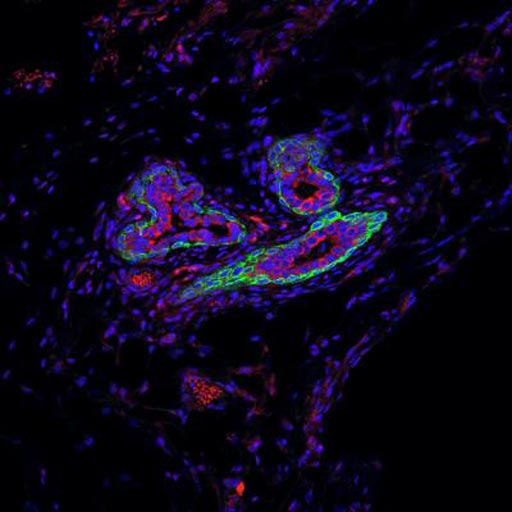MicroRNA Maintains Cancer Cell Traits and Prompts Tumor Formation
By LabMedica International staff writers
Posted on 01 Jun 2017
A team of molecular biologists has determined that the microRNA mi-R-199a plays a critical role in breast tumor formation by helping to maintain the stem cell character of cancer stem cells and prevent them from differentiating into non-dividing cell types.Posted on 01 Jun 2017
MicroRNAs (miRNAs) are a small noncoding family of 19- to 25-nucleotide RNAs that regulate gene expression by targeting messenger RNAs (mRNAs) in a sequence specific manner, inducing translational repression or mRNA degradation, depending on the degree of complement between miRNAs and their targets. Many miRNAs are conserved in sequence between distantly related organisms, suggesting that these molecules participate in essential processes. In fact, miRNAs have been shown to be involved in the regulation of gene expression during development, cell proliferation, apoptosis, glucose metabolism, stress resistance, and cancer.

Image: A photomicrograph showing different cell types in the normal mammary ducts of a mouse. The luminal cells (red) are milk-producing cells and the basal cells (green) have contractile functions, but also are responsible for regenerating the mammary gland, as they contain the majority of mammary gland stem cells. These stem cells, located in the outer layer of the gland, are exposed to microenvironmental factors and interact with various immune cells, including macrophages, in the mammary gland (Photo courtesy of Toni Celià-Terrassa and Yibin Kang, Princeton University).
Tumor-initiating cells, or cancer stem cells (CSCs), possess stem-cell-like properties similar to those observed in normal adult tissue stem cells. Therefore, it is likely that normal and cancerous stem cells share regulatory mechanisms for maintaining self-renewing capacity and resisting differentiation elicited by molecular cues in the microenvironment.
Investigators at Princeton University reported in the May 22, 2017, online edition of the journal Nature Cell Biology that miR-199a promoted stem cell properties in normal mammary and breast cancer stem cells by directly repressing the nuclear receptor co-repressor LCOR (Ligand-dependent co-repressor), which primes interferon (IFN) responses. Elevated miR-199a expression in stem-cell-enriched populations protected normal and malignant stem-like cells from differentiation and senescence induced by IFNs that were produced by epithelial and immune cells in the mammary gland.
The ability of cancer stem cells to form tumors was enhanced by miR-199a. In contrast, increasing LCOR levels reduced the tumor-forming capacity of cancer stem cells. Breast cancer patients whose tumors expressed large amounts of miR-199a showed poor survival rates, whereas tumors with high levels of LCOR had a better prognosis.
"Interferons have been widely used for the treatment of multiple cancer types," said senior author Dr. Yibin Kang, professor of molecular biology at Princeton University. "These treatments might become more effective if the interferon-resistant cancer stem cells can be rendered sensitive by targeting the miR-199a-LCOR pathway."














